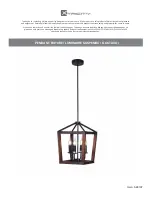
Rough Water or Poor
Visibility Operation
Avoid operation in these conditions. If
you must do so, proceed with caution
and prudence using minimum speed.
Crossing Waves
Reduce speed.
Always be prepared to steer and bal-
ance as necessary.
When crossing wakes, always keep a
safe distance from watercraft ahead.
WARNING
When crossing wakes, slow down.
Operator and passenger(s) can
brace themselves by posting. Do
not jump waves or wakes.
Stopping/Docking
The watercraft is slowed by water
drag. The stopping distance will vary
depending on the watercraft size,
weight, speed, water surface condi-
tion, presence and direction of wind
and current.
F18A03Y
The operator should become familiar-
ized with the stopping distance under
different conditions.
Release the throttle at a sufficient
distance before the expected landing
area.
Reduce speed to idle.
Shift to neutral, reverse or forward, as
required.
WARNING
Directional
control
is
reduced
when
the
throttle
is
released
and/or when engine is off.
Beaching
CAUTION:
It is not recommended
to run the watercraft to the beach.
Come slowly to the beach and shut
off the engine using the safety lanyard
before water depth is less than 90 cm
(3 ft) under the lowest rear portion of
the hull, then pull the watercraft to the
beach.
CAUTION:
Riding the watercraft in
shallower water might damage the
impeller or other jet pump compo-
nents.
F18A03Y
CAUTION:
Pay attention,
when
leaving the watercraft on the beach,
so that the side vanes do not rub
or hit the ground due to the rock-
ing movement. It might eventually
damage components of the O.P.A.S.
system.
_____________________
75
Print Preview Version 8.0 PubTeX output 2003.11.07:1153 File: C:\TEMP\.aptcache\smo2004-003en/tfa00394.dvi User: CASS2 Page: 77
www.SeaDooManuals.net
Содержание GTX 4-Tec/ Supersharged/ Limited Supercharged/ Wakeboard Edition
Страница 1: ...www SeaDooManuals net ...
Страница 136: ...www SeaDooManuals net ...
















































